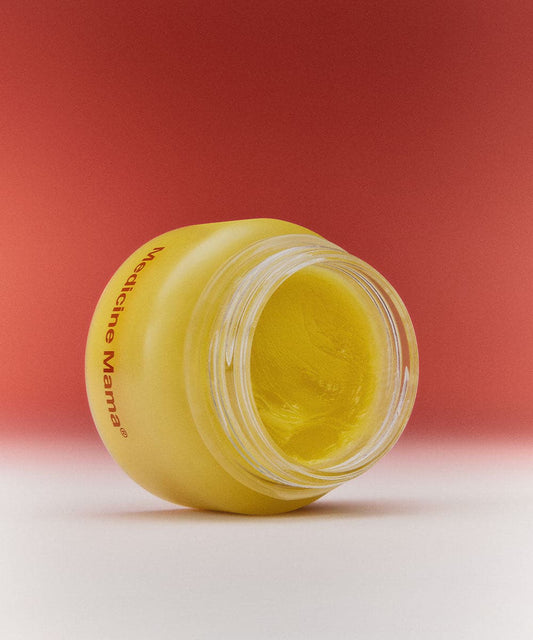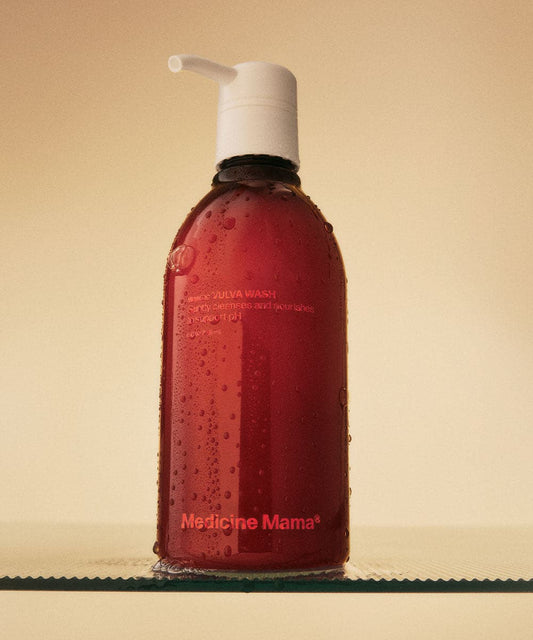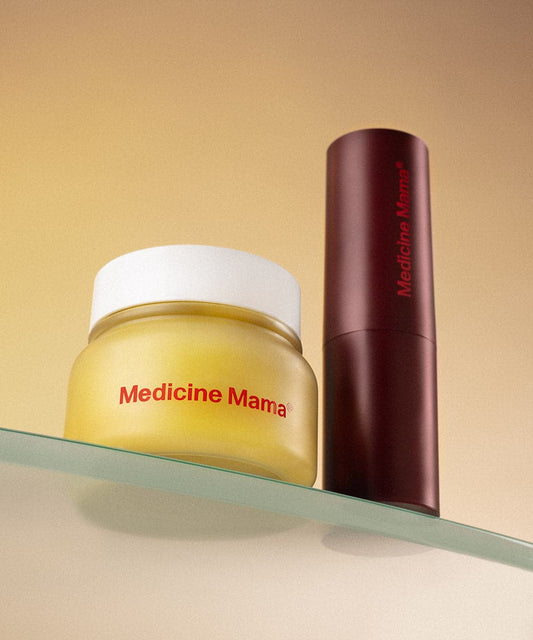Reviewed by | Dr. Clare Bertucio MD
Tackling ingrown hairs on your vulva lips can be as perplexing as trying to solve a Rubik’s Cube in the dark. Frustrating, right?
At Medicine Mama, we totally get it. Ingrown hairs don’t just show up uninvited — they bring along discomfort, redness, and sometimes even a bit of embarrassment. But don’t panic because we’re here to turn on the lights and offer you some clarity and solutions.
In this article, we’re diving into the nitty-gritty of ingrown hairs to uncover why they love to visit and how you can send them packing — or, better yet, keep them from knocking on your door in the first place.
What Is the Vulva?
Before we dive into the world of ingrown hairs, let’s get one thing straight: the vulva is not a one-part show. It’s the entire external package of the female genital area, encompassing everything from the mons pubis (the mound), the labia majora and minora (the outer and inner lips), to the clitoris and its hood, and yes, the entrance to the vagina, too.
Understanding this distinction is important because knowing your vulva is like having the manual for your own body — each part has its role, especially when it comes to things like hair removal, which can lead to those pesky ingrown hairs.
So, What Are Ingrown Hairs?
Picture this: hair grows, decides it’s not ready to face the world, and curls back into the skin. The result? Ingrown hairs.
They're like the uninvited guests at your skin’s party, often arriving as small, red bumps that can be itchy or tender to the touch.
Here’s a quick rundown of signs you’re hosting this little bash:
- Red Bumps: The most telltale sign, these can pop up anywhere hair grows.
- Pain and Itchiness: Why not add discomfort to the mix?
- Pus-Filled Blisters: Sometimes, they bring along friends in the form of little pustules.
- Darkened Skin: The area might get a bit darker thanks to irritation.
While everyone's vulva can encounter ingrown hairs, not everyone will experience the symptoms in the same way — after all, every vulva is unique! Some might hardly notice them, while others could find them more bothersome or even painful.
This variation is all about how our individual skin responds, and getting to grips with these differences is key to managing ingrown hairs effectively and with care.
What Causes Ingrown Hairs?
Diving deeper into the world of ingrown hairs, let's explore the root of the issue — quite literally. Ingrown hairs on the vulva lip, or anywhere for that matter, aren't just random occurrences. They have their origins, and understanding these can help us prevent them.
Here are the usual suspects:
Hair Removal Techniques
Waxing, shaving, and plucking are the most common culprits behind ingrown hairs. While effective for hair removal, each method can irritate the hair follicle, leading to hairs growing sideways or curling back into the skin rather than upward and outward. This irritation is especially pronounced in the delicate pubic area, where the skin is sensitive.
Curly or Coarse Hair
We hate to be the bearer of bad news, but those with curly hair are more prone to ingrown hairs — particularly in the pubic area. Curly hair tends to curl back toward the skin, easily piercing it and growing inward, forming an inflamed ingrown or resulting in pimples or cysts.
Too Much Dead Skin
Regular exfoliating plays a pretty big role in keeping your vulvar region clear of dead skin cells that can trap hairs beneath the surface. Neglecting this step (or going overboard) can disrupt the natural balance, leading to blocked pores and the inevitable rise of ingrown hairs.
Tight Clothes
Ever think your skinny jeans could be the culprit? Tight clothing around the genital area presses and rubs against your skin, making it a prime zone for hairs to grow inward. Letting your skin breathe with vulva-friendly fabrics (think: cotton) can keep those hairs in check.
And Then, There's Just Being Human
Sometimes, the cause of ingrown hairs is just being human. Hormonal changes, your skin's unique characteristics, or just plain bad luck can make you more prone to them. Think of it as your skin's way of keeping you humble, reminding you that nobody's perfect.
How Can I Soothe Ingrown Hairs on My Vulva?
Now that we've navigated the "why" behind ingrown hairs on your vulva lip, let's dive into the "how" — how to soothe them when they inevitably show up.
Warm Compresses: Your First Line of Defense
Start with something simple yet effective: warm compresses. This technique is like a peace offering to your irritated skin.
Applying a warm, damp washcloth to the genital area helps soften the skin and can encourage the hair to emerge from its hiding spot. Plus, it's a comforting way to reduce the redness and swelling associated with ingrown hairs.
Consult the Pros: When To See a Healthcare Provider
If your ingrown hair is stubborn, shows signs of infection (like becoming a pus-filled cyst), or is causing significant discomfort, it’s time to call in the cavalry. Reach out to a dermatologist or OB-GYN who can provide medical advice and treatment options. They might suggest topical treatments or discuss laser hair removal as a more permanent solution for recurrent issues.
Over-the-Counter Solutions: Aid from the Aisles
There are over-the-counter products designed to treat ingrown hairs. Look for topical treatments to help gently exfoliate the skin with VMAGIC® Grooming Polish, reduce irritation, and treat infection. Just make sure to patch-test any new product to avoid further irritating the sensitive vulvar area.
Home Remedies: Gentle Care at Home
Sometimes, the best treatments are the ones you can do at home with just a few simple ingredients. Warm water soaks or washcloth compresses can open up the pores, while gentle exfoliating with a soft washcloth can help remove dead skin cells without causing abrasion. And always pat the area dry with a soft towel — no rubbing!
Keeping It Clean and Moist: The Role of Proper Hygiene
Keeping the affected area clean is paramount, as is keeping it moisturized. After patting dry with a soft towel, apply our VMAGIC® Vulva Balm for optimal hydration without pore-clogging or irritation. This organic, gentle balm, crafted for the vulva, soothes and protects, balancing moisture and aiding in ingrown hair recovery. It's an essential part of vulvar care.
Tips for Keeping Ingrown Hairs at Bay
Managing ingrown hairs, especially around the vulva, requires a delicate balance of care and prevention.
Here are some tips to help keep these pesky bumps at bay:
Lighten Up on the Hair Removal
If your routine allows, taking breaks between hair removal sessions can give your skin a much-needed rest. This could mean spacing out appointments or embracing more natural growth. Your skin will thank you.
Tweeze With Care
Sometimes, a stray ingrown hair needs a little nudge. If you’re going the tweezing route, make sure those tweezers are sterilized. Gently free the hair without plucking it entirely to avoid further irritation or infection.
Keep an Eye on Your Skin's Reaction
Not all products play nice with your skin, especially in such a sensitive area. If you notice razor burn or any adverse reactions, it might be time to switch up your shaving cream or consider a different hair removal method that’s kinder to your skin.
Exfoliate the Right Way
For exfoliation, the trick is finding that sweet spot — enough to prevent ingrown hairs but not so much that you irritate your skin. Gentle, regular exfoliation helps, and when you need that perfect balance, our VMAGIC® Grooming Polish comes into play. It's designed specifically for the vulva, offering a soft touch that preps and smooths without overdoing it.
When In Doubt, Reach Out
Stubborn ingrown hairs, especially ones that look more like a sore or lesion, could be masquerading as something else, like an STI or genital herpes. It’s always smart to get a second opinion from a gynecologist or dermatologist. They can offer tailored advice and prescribe treatments, ensuring your wellness and peace of mind.
The Bottom Line
At Medicine Mama, we know that ingrown hairs can be a hassle, but with the right approach, they don't have to be a persistent problem. From the gentle art of exfoliation with our Grooming Polish to the wise words of seeking professional advice when things seem off, every step you take is a step toward embracing and caring for your body with confidence and love.
Remember, your vulva is as unique as you are, and it deserves attention and care tailored to its needs. Here's to smooth sailing ahead and feeling fabulous in your own skin — because, at the end of the day, it's all about nurturing yourself and enjoying the journey.
Sources:
What are the parts of the female sexual anatomy? | Planned Parenthood
Ingrown Hair: What It Looks Like, Causes, Treatment & Prevention | Cleveland Clinic



